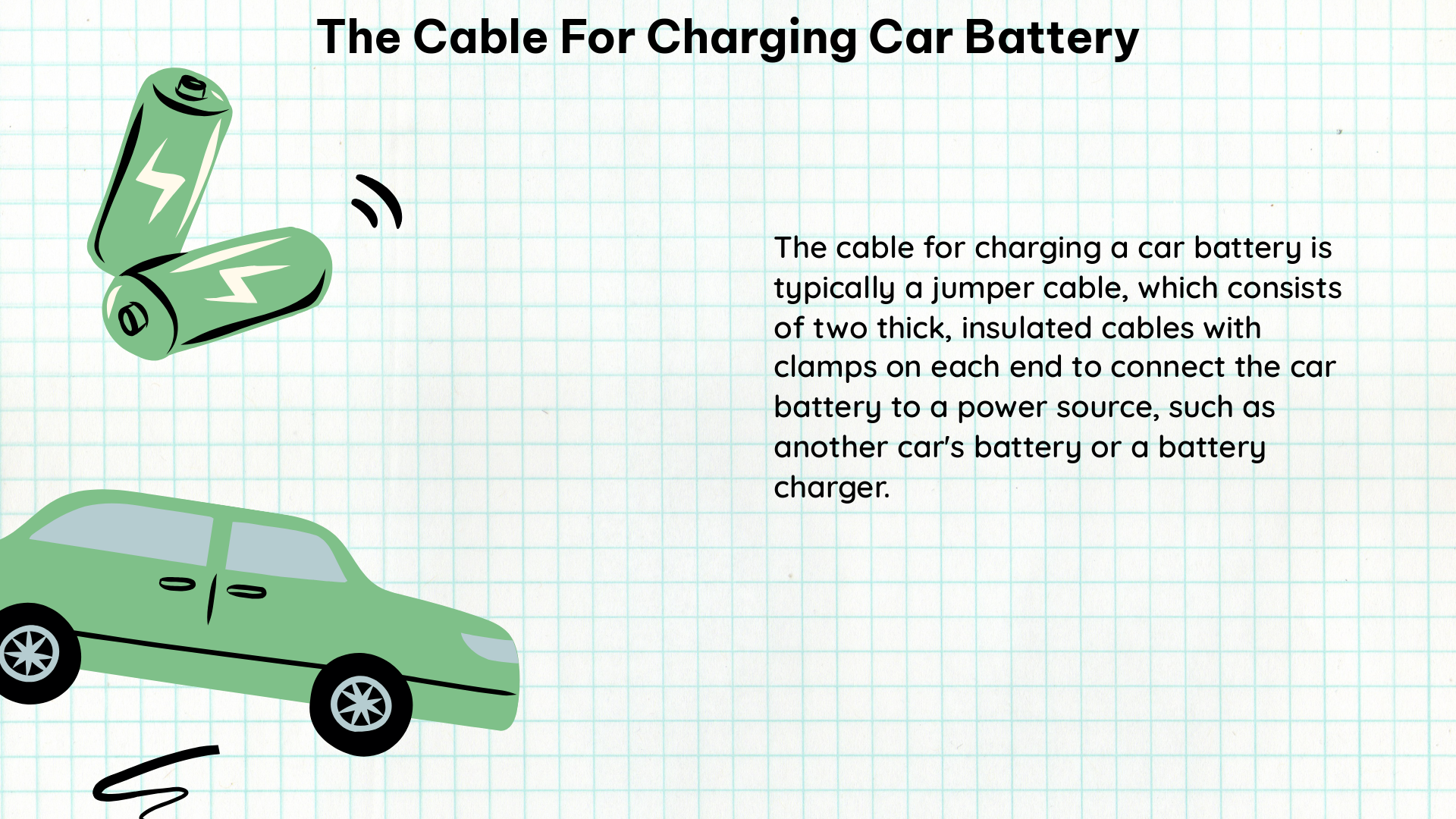The cable for charging a car battery, also known as a battery charger cable, is an essential tool for maintaining the health and longevity of your vehicle’s battery. This comprehensive guide will delve into the technical specifications, best practices, and DIY tips to ensure you have a thorough understanding of this crucial component.
Wire Gauge: The Heart of the Cable
The gauge of the wire in the cable for charging a car battery is the most critical factor to consider. The wire gauge, measured in American Wire Gauge (AWG), determines the current-carrying capacity of the cable. A thicker wire gauge can handle higher currents without overheating, which is essential when charging a car battery.
| Wire Gauge | Current Capacity |
|---|---|
| 10 AWG | Up to 30 amps |
| 12 AWG | Up to 20 amps |
| 14 AWG | Up to 15 amps |
For most car batteries, a cable with a wire gauge of 10 to 12 AWG is recommended, as it can safely handle the typical charging current of 10 to 15 amps.
Voltage Rating: Matching the Battery

The voltage rating of the cable for charging a car battery is crucial to ensure proper and safe charging. The voltage should match the battery voltage to avoid damaging the battery or the cable. For a standard 12-volt car battery, the cable should have a voltage rating of at least 14.4 volts to ensure the battery is charged to its full capacity.
It’s important to note that some car batteries may have a different voltage, such as 6 or 24 volts. In these cases, the cable’s voltage rating should match the battery’s voltage to prevent any issues.
Current Rating: Balancing Charge Time and Safety
The current rating of the cable for charging a car battery determines how quickly the battery can be charged. A higher current rating means a faster charge time, but it also requires a thicker wire gauge to handle the higher current without overheating.
For most car batteries, a current rating of 10 to 15 amps is sufficient. This range provides a balance between a reasonable charge time and the cable’s ability to handle the current without risk of overheating or damage.
It’s crucial to ensure that the cable’s current rating matches the battery’s charging requirements. Exceeding the recommended current rating can lead to overheating, which can damage the battery or the cable itself.
Connector Type: Ensuring a Secure Connection
The type of connector on the cable for charging a car battery is essential for a secure and reliable connection. The most common types of connectors are:
- Top-Post Connectors: These connectors are designed to fit the top-mounted battery terminals found in many vehicles.
- Side-Terminal Connectors: These connectors are used for batteries with terminals located on the side of the battery.
It’s important to choose a cable with the correct connector type that matches your car battery’s terminals. A secure connection is crucial to ensure efficient and safe charging.
Quantifiable Data: Measuring the Cable’s Performance
When evaluating the cable for charging a car battery, the following quantifiable data points can be used to assess its performance:
- Wire Gauge: Measured in AWG, the wire gauge determines the current-carrying capacity of the cable.
- Voltage Rating: Measured in volts, the voltage rating should match the battery’s voltage to ensure proper charging.
- Current Rating: Measured in amps, the current rating determines the maximum charging current the cable can handle.
- Cable Length: Measured in feet or meters, the cable length should be appropriate for your specific charging setup.
- Connector Type: The type of connector (top-post or side-terminal) should match the battery terminals.
- Cable Flexibility: The cable’s flexibility can affect its ease of use and routing in tight spaces.
- Cable Durability: The cable’s construction and materials can impact its long-term reliability and resistance to wear and tear.
By considering these quantifiable data points, you can make an informed decision when selecting the right cable for charging your car battery.
DIY Tips for Safe and Efficient Charging
When using a cable for charging a car battery, it’s essential to follow these DIY tips for safety and efficiency:
- Match the Cable Specifications: Always use a cable with the correct gauge, voltage, and current ratings for your battery.
- Secure the Connector: Ensure the connector matches the battery terminals for a reliable connection.
- Charge in a Well-Ventilated Area: Avoid the buildup of hydrogen gas, which is explosive.
- Monitor the Charging Process: Never leave the battery unattended while charging.
- Disconnect the Cable: Disconnect the cable from the battery once charging is complete.
- Check the Battery Water Level: Top up the battery with distilled or deionized water if necessary.
By following these tips, you can ensure safe and efficient charging of your car battery, prolonging its lifespan and maintaining the overall health of your vehicle’s electrical system.
Conclusion
The cable for charging a car battery is a crucial component in maintaining the health and longevity of your vehicle’s battery. By understanding the technical specifications, best practices, and DIY tips, you can make an informed decision when selecting the right cable and ensure safe and efficient charging. Remember to always prioritize safety and follow the manufacturer’s recommendations to get the most out of your car battery and its charging system.
References

The lambdageeks.com Core SME Team is a group of experienced subject matter experts from diverse scientific and technical fields including Physics, Chemistry, Technology,Electronics & Electrical Engineering, Automotive, Mechanical Engineering. Our team collaborates to create high-quality, well-researched articles on a wide range of science and technology topics for the lambdageeks.com website.
All Our Senior SME are having more than 7 Years of experience in the respective fields . They are either Working Industry Professionals or assocaited With different Universities. Refer Our Authors Page to get to know About our Core SMEs.